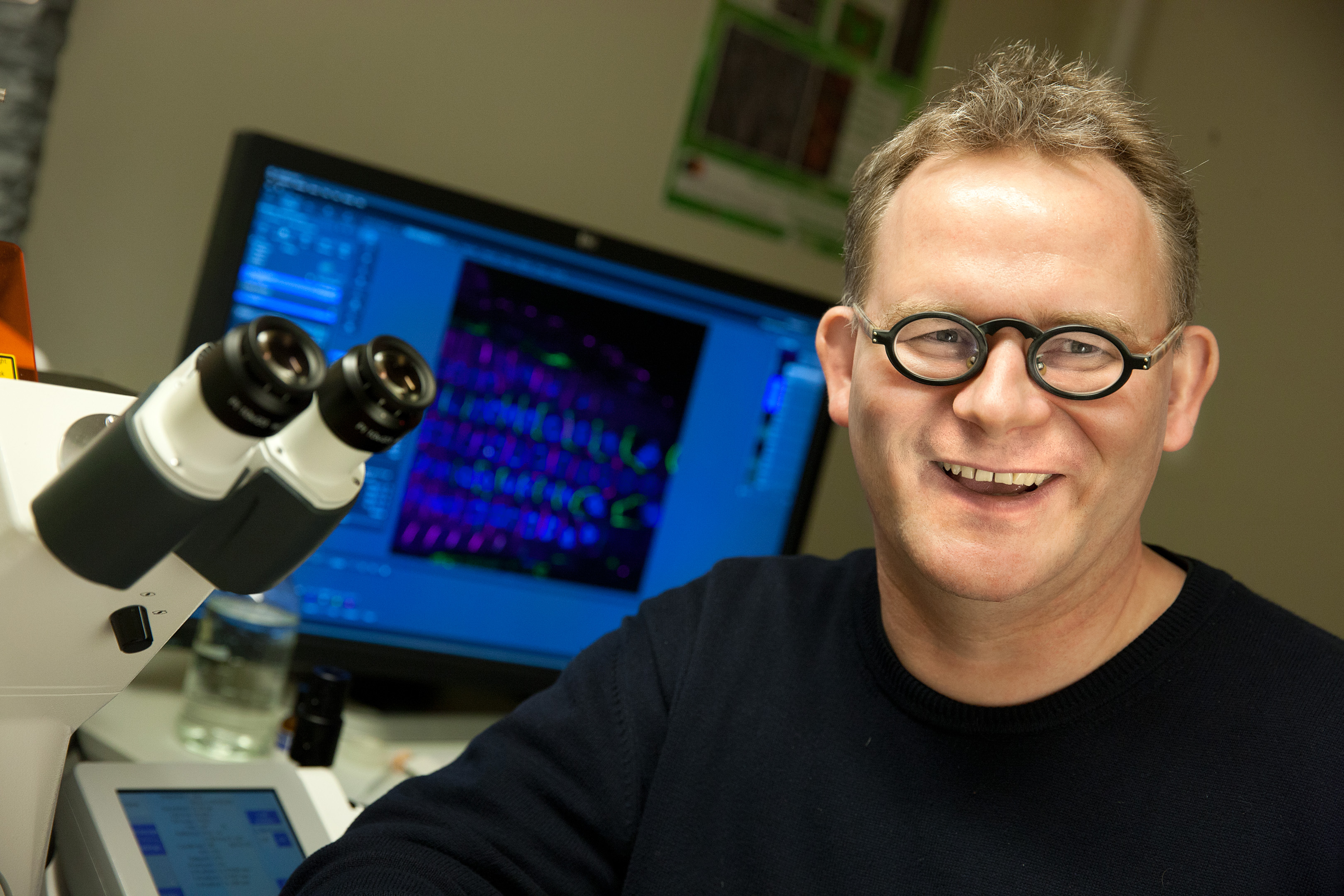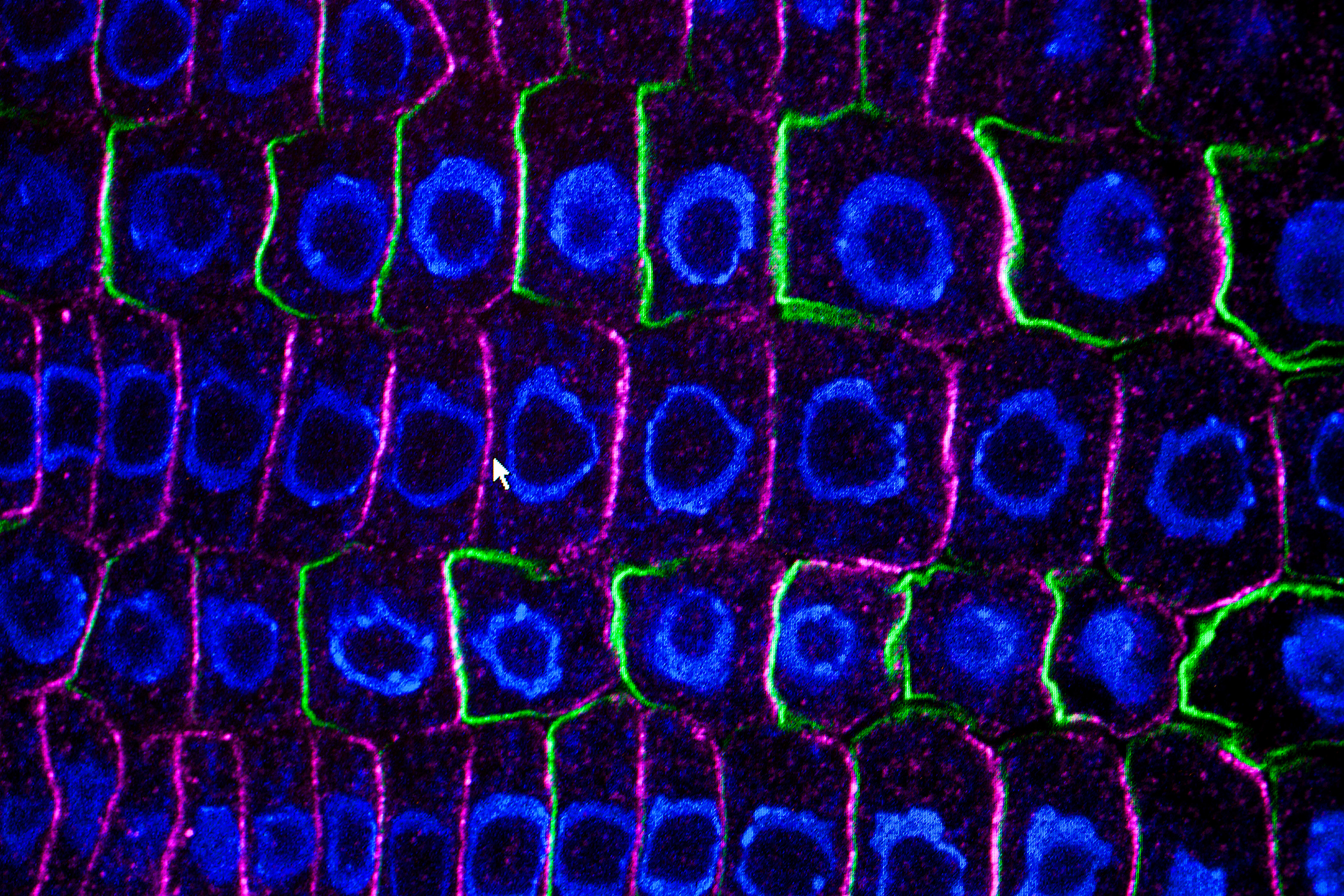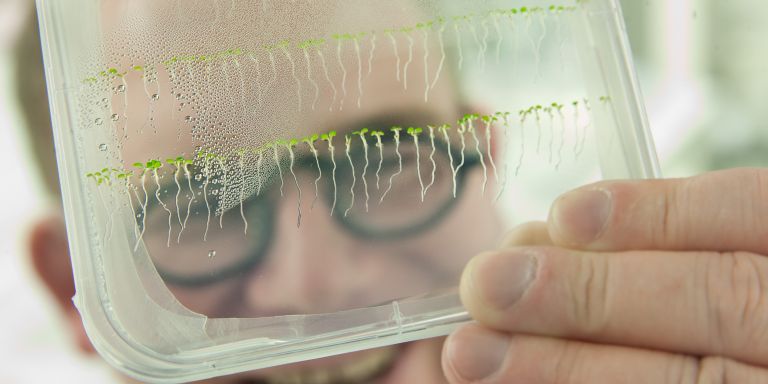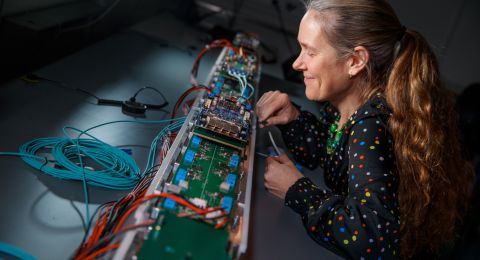
Project Grant 2012
ShapeSystems - Systems Biology of Plant Cell Shape
Principal investigator:
Markus Grebe, Professor of Plant Developmental and Cell Biology
Co-investigators:
Swedish University of Agricultural Sciences Umeå
Karin Ljung
Rishikesh Bhalearo
Stephanie Robert
Lund University
Henrik Jönsson
Linköping University
Magnus Berggren
Institution:
Umeå University
Grant in SEK:
SEK 31.3 million over five years
“For example, the shape of specific tree cells is important to be able to form wood and for the cells on the surface of the roots the right shape is important to form root hairs that take up water and minerals from the soil,” explains Markus Grebe, Professor of Plant Developmental and Cell Biology, Umeå University.
When the cells reach the stage that they specialize at performing certain tasks, like skin cells that build up the skin or hair cells or some other kind of cell, they also obtain a special shape.
“Most cells look different depending on what they should do. Our project aims to understand how cells change shape at various levels. It is a matter of basic system biology research.”
It is important to understand how cells acquire their shape and how they are placed next to each other. Defects can damage the organism’s growth and development and lead to premature death, to organ deformation or to the development of cancer.
The project is targeted at plant research, but since plant researchers have often found genes that also became of interest to basic human research, the results may also be of significance to medical research.
Early discovery
The cell’s skeleton (cytoskeleton) is very important to the cell’s function as well as for movements within cells and of cells themselves. Before the project began, the researchers found a protein that coordinates the organization of the cytoskeleton.
“This protein is both of significance to the individual cell, but also to the entire system, for how the cell skeleton and the cells coordinate themselves.”
“This discovery, together with the one of another protein that Rishi Bhalerao and I were the first to describe in 2011, means that we have functional knowledge of new proteins to further build on.”
The other protein that was discovered at the time plays a major role in the cell’s ability to expand by transporting building materials to the cell wall that makes it possible for the cells to expand.
Important hormone
Markus Grebe’s main field of study is exactly how the cells extend and coordinate themselves and how the plant’s cells can create differences between different ends of the cell in a process called cell polarization. This is a very important and fundamental process for all living organisms, including humans. In plants, it is, for example, necessary for roots to grow down into the soil and for shoots to grow upwards.
In his earlier research, Grebe showed that the growth hormone auxin affects the cells’ shape. Through the project, which is supported by the Knut and Alice Wallenberg Foundation, he intends to find out how this happens at a molecular level with the help of plant researchers from Umeå University and the Swedish University of Agricultural Sciences as well as physicists in Lund and Linköping.

“We know that the hormone auxin triggers shape changes but not exactly how this happens,” notes Markus Grebe.
By mutating various genes in the model plant, thale cress, Arabidopsis thaliana, or by using specific chemicals that block the cells’ signaling, the researchers can see which changes this causes to the shape of cells in the plant root.
Root hairs in focus
Central to the project is the cell’s expansion, signaling position and its ability to place a hair.
“The small hair that develops is important for the plant to take up nutrients and water. We observed that a signaling protein that contributes to the shape of hair cells changes position from the bottom of the cell to a position where the hair will finally grow out. The signaling protein’s position is also very sensitive to chemicals that in turn affect the cytoskeleton and important signal pathways,” explains Grebe.
Stephanie Robert, one of the researchers in the project, is developing and systematically searching for new chemicals that cause shape changes.
Using an ion pump that the research group of Magnus Berggren developed in Linköping, the researchers can influence individual cells by applying the hormone auxin or one of the chemicals that Robert found to affect shape signaling.
“The hairs are programmed to grow out at a location through a protein that controls both shape and direction. We know that the hormone auxin plays a role in the coordination of this, but we don’t know how. When we divided the root in three parts and measured the hormone levels, we saw that they are high at the tip of the root, but lower the farther from the tip you get. We want to find out how the hormone’s concentration determines where in the cell the hair will be formed.”
Most of the hormone auxin is concentrated in the root tip. But the researchers have made a mutant where the hormone concentration is similarly low in the entire root.
“Then, it turned out that the cells did not extend in the same way and that hairs did not grow out at the position where they normally grow out. By applying an artificial hormone source, the hairs were able to grow out again in their normal position towards the highest hormone concentration. This shows that the concentration gradient of the hormone controls at which position the hair will be formed along the cell,” confirms Grebe.

Special microscope
The researchers have great hopes that a specially made microscope will help them continue to analyze these cell shape changes in living roots.
“It’s a horizontal microscope where we can see how the roots grow downwards, and we can follow what happens when we apply the hormone or signal-inhibiting chemicals.”
Markus Grebe is very pleased with the composition of the research team.
“We have a high level of expertise throughout the entire team. Besides those already mentioned, we have Karin Ljung who is one of the world’s foremost experts at measuring the hormone auxin in small amounts, and Henrik Jönsson who is prominent in computer modeling of hormone and cytoskeleton-regulated shape changes in plant cells and plant organs.”
Text Carina Dahlberg
Translation Semantix
Photo Magnus Bergström



